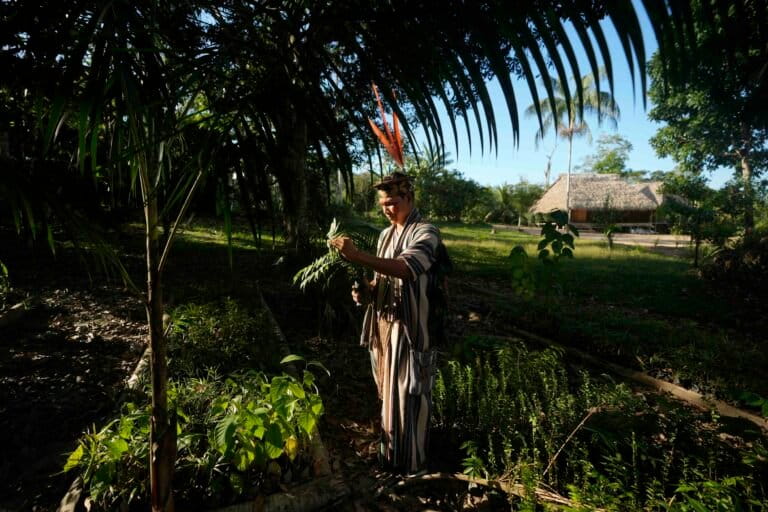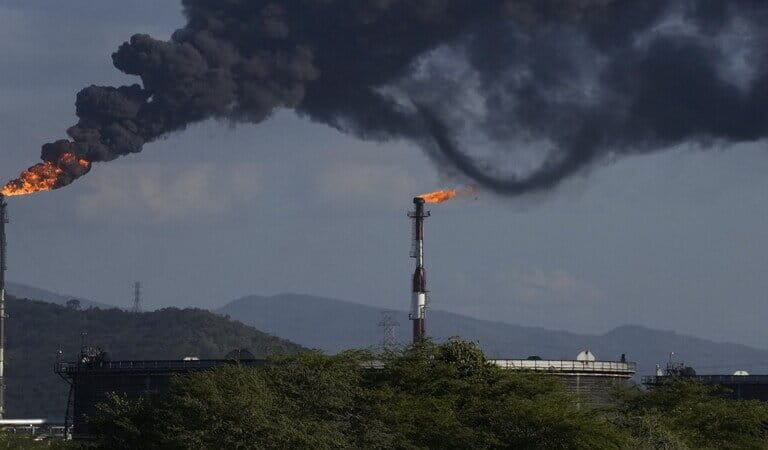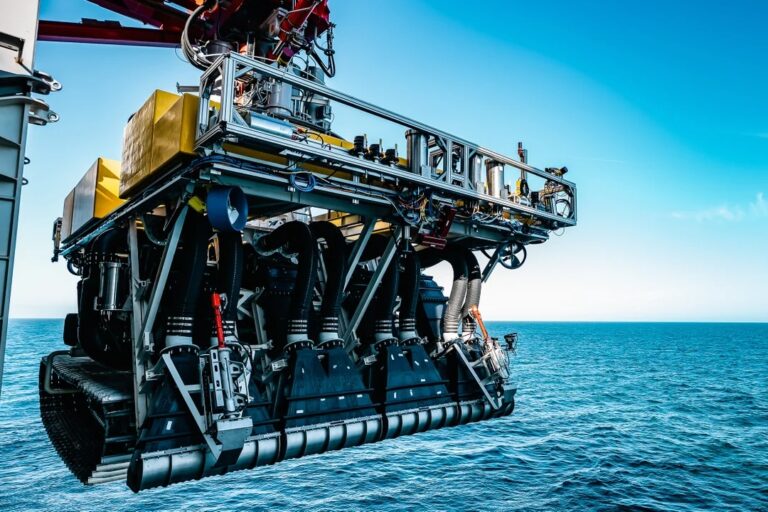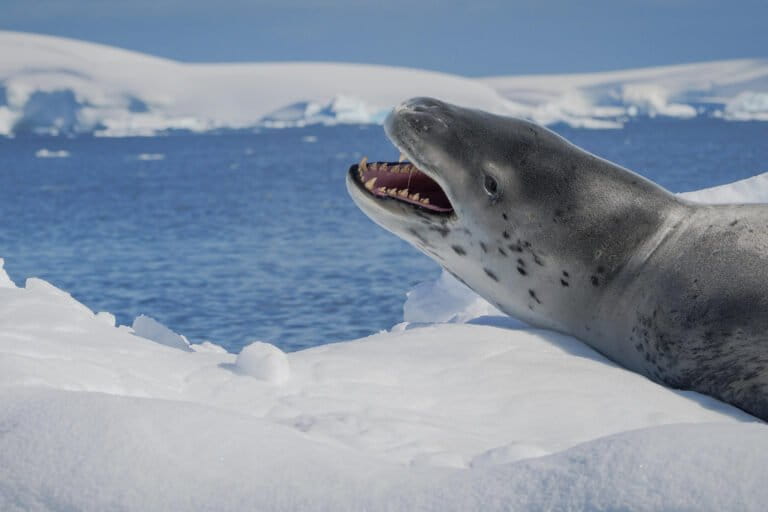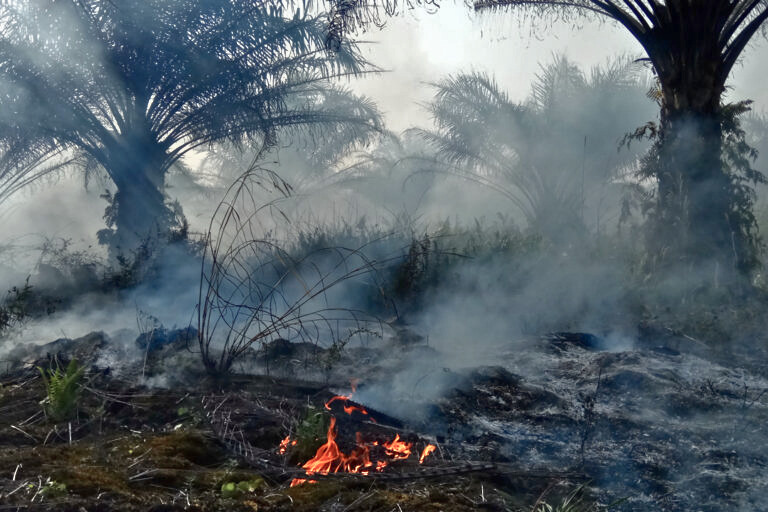- Fishing is becoming a meager profession in Indonesia’s industrial and resort hub of Batam.
- Satellite imagery shows that only 1.5% of the island’s landmass still retains mangrove habitat.
- Construction of dams, industrial estates and reservoirs are the primary causes of mangrove destruction, according to researchers and local environmental nonprofit Akar Bhumi.
BATAM, Indonesia — “There’s no more fish,” says Abdul Ganip, holding up a mostly empty flask containing a few prawns. “It’s a quiet catch.”
For decades, the 57-year-old has lived and worked as a fisherman on the Indonesian island of Batam, better known as an industrial hub and special economic zone off the eastern coast of Sumatra.
He and other fishermen eked out a profit catching and selling seafood on this 715-square-kilometer (276-square-mile) island, where the mangrove habitat accounted for only 4% of the landmass as of 1990. Similar to Singapore, less than an hour by ferry to the north, the rest of Batam is paved over and even expanded with infill, the reclamation of coastal and brackish areas with sand to create new land for factories, resorts and apartment blocks.
Today, mangrove covers a mere 1.5% of the island, according to the satellite-imaging web service Nusantara Atlas. Landsat imagery shows that Batam had 5,873 hectares (14,513 acres) of mangrove in 1990. Today the island only has 2,395 hectares (5,918 acres).
Ganip says he experienced a decline in catch in the past two years. His bubu traps, basket-like contraptions that float on the water’s surface, used to net him 3 kilograms (nearly 7 pounds) of fish a day. Now he can barely catch half a kilogram. His earnings have dropped from 250,000 rupiah ($16) a day to barely 50,000 rupiah ($3).
Awang Gafar, 67, collects shrimp at the south end of Batam. In the 1980s, he says, those waters easily yielded 2 kg (4.4 lbs) of shrimp a trip, but now he can’t even get 300 grams (11 ounces). The catch is so slim that Saparuddin, a fisherman who operates out of the island’s northwest corner, says he “thinks twice about even giving kids money for snacks.” Ganip similarly laments his diminished ability to pay for his children’s schooling.
According to Saparuddin, the problems are trifold for fishers in Batam. The number of fishers is growing despite the reduction in fish habitat. Fishing itself is harder because trash clogs the surface of the waters around the island. Lastly, the cost of fuel for boats, and therefore fishing offshore or along less-inhabited stretches of the coastline, is higher now.
Abas, 65, says he knows of many fellow fishermen who died before receiving government assistance earmarked for fishers who lost their livelihood as a result of development.


A problem, not just for fish
In 2015, geographers from Indonesia’s Gadjah Mada University published an analysis of satellite data showing there had been some natural attrition in Batam’s mangrove habitat from 1990 to 2000 due to erosion from “wind, waves and flooding.” However, the overwhelming cause of habitat degradation — 96% — was human development. More than half of that development was for the building of freshwater reservoirs; 13% was vacant, cleared land; 11% was turned into housing; 7% became agricultural land; and 5% was converted to industrial estates.
Batam-based nonprofit Akar Bhumi says it has filed 22 cases of environmental damage with the local government. Mangrove deforestation is still the leading complaint they found. “Infilling is covering more and more areas,” said Sony, the head of Akar Bhumi. “ We report the cases but there are no repercussions.”
The loss of mangroves in Batam isn’t only detrimental for fishers, according to academics and government conservation entities.
Mangroves on small islands such as Batam protect the soil from erosion resulting from wave action, says Didy Wurjadi, head of public relations for Indonesia’s Peatland and Mangrove Restoration Agency.
Mangroves have also been shown to have a purifying effect on polluted seawater as their roots can bind and therefore neutralize pollutants. Researchers in Tanzania found that Rhizophora mucronata, one of the most common tropical mangrove species, can absorb more than 90% of toxins introduced by domestic waste. Researchers in Kenya found that R. mucronata is also effective at removing dye introduced into waterways by industrial effluent.
Despite these recognized benefits, mangrove coverage is decreasing, or getting damaged, at a rate of 376 hectares (929 acres) a year in the Batam islands, according to researchers at the University of Riau on the Sumatran mainland.
A version of this story was reported by Mongabay’s Indonesia team and first published here on our Indonesian site on Dec. 3, 2022.
Banner image: A local fisherman pushing his canoe in the polluted waters of Bagan Batam. Photo by Yogi Eka Sahputra/Mongabay Indonesia.
Related reading:
Indonesia’s mangrove revival hindered by conflicting policies
Citations:
Febriannaningsih, B. A. (2015). Landsat TM and OLI application for mangrove cover and density change 1990-2015 in Batam Island (Bachelor’s thesis, Gadjah Mada University, Yogyakarta, Indonesia). Retrieved from: http://etd.repository.ugm.ac.id/penelitian/detail/90537
Kondo, A. K., Nyomora, A., & Njau, K. N. (2013). Pollutants removal efficiency of two mangroves species (Avicennia marina and Rhizophora mucronata) in treating domestic sewage. Huria: Journal of the Open University of Tanzania, 15(1), 1-17. Retrieved from: https://www.ajol.info/index.php/huria/article/view/110846
Oloo, C. M., Onyari, J. M., Wanyonyi, W. C., Wabomba, J. N., & Muinde, V. M. (2020). Adsorptive removal of hazardous crystal violet dye form aqueous solution using Rhizophora mucronata stem-barks: Equilibrium and kinetics studies. Environmental Chemistry and Ecotoxicology, 2, 64-72. doi:10.1016/j.enceco.2020.05.001






